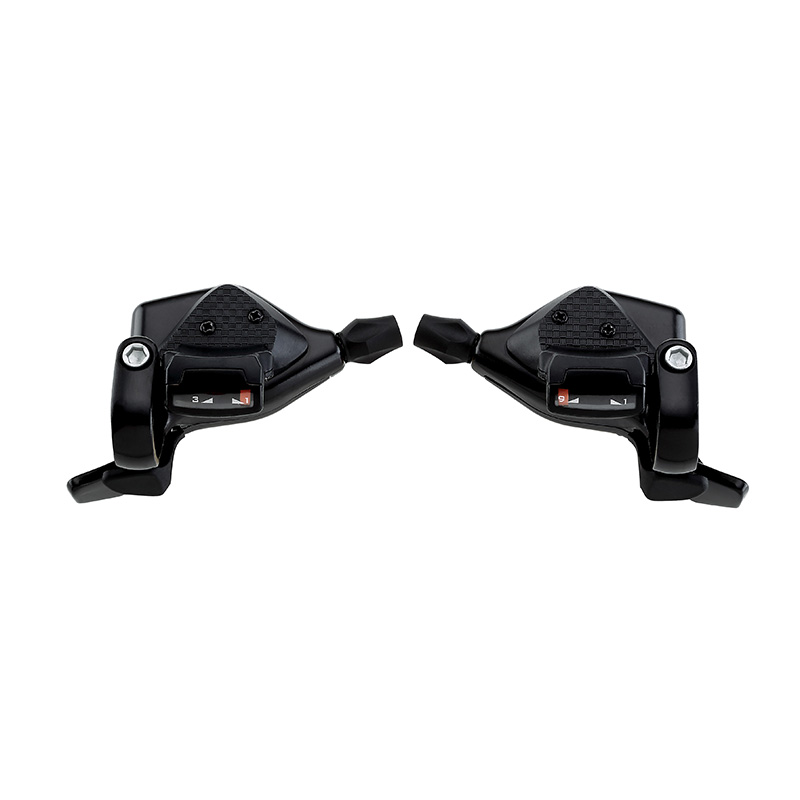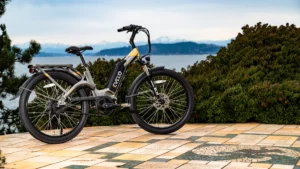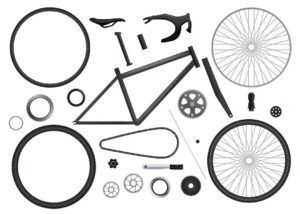In the cycling industry, the mechanism by which you change gears—bicycle shifters—is pivotal to your riding experience. From swift adjustments on steep climbs to seamless transitions on winding descents, the type of shifter you choose can significantly impact your performance and enjoyment. Let’s delve into the different types of bicycle shifters to understand their functionalities, advantages, and considerations when selecting the best option for your cycling needs.

Main Types of Shifters on Bikes
Bicycle shifters come in various forms, each offering unique advantages tailored to different riding styles and preferences. Understanding these types can empower you to make an informed decision when upgrading or choosing a new bike. Here are the 6 different bike shifters:
Trigger Shifters
Trigger shifters are among the most common types found on modern bicycles, known for their intuitive design and ergonomic functionality.
How Trigger Shifters Work?
Trigger shifters operate with a lever mechanism that allows riders to shift gears by pressing or pulling triggers integrated into the handlebars.
Pros and Cons of Trigger Shifters
Pros: Trigger shifters provide precise gear changes, are easy to use even in challenging conditions, and offer quick shifting capabilities.
Cons: Some riders find trigger shifters less comfortable for extended use compared to alternative designs like grip shifters.
Grip Shifters
Grip shifters are recognizable by their twist-grip mechanism, offering a straightforward approach to gear changes directly from the handlebars.
How Grip Shifters Work?
Grip shifters function by twisting the grip either clockwise or counterclockwise to move the derailleur and adjust the gears.
Pros and Cons of Grip Shifters
Pros: Grip shifters are favored for their simplicity and seamless integration with handlebar grips, providing a natural feel for gear adjustments.
Cons: They can sometimes be accidentally activated by riders with larger hands or when negotiating rough terrain.
Thumb Shifters
Thumb shifters, although less common in modern cycling, remain popular among certain cycling enthusiasts for their simplicity and reliability.
How Thumb Shifters Work?
Thumb shifters typically consist of levers mounted on the handlebars or downtube, allowing riders to shift gears by pressing the levers with their thumbs.
Pros and Cons of Thumb Shifters
Pros: Thumb shifters are durable, lightweight, and offer precise gear changes without requiring significant hand movement.
Cons: They may require riders to momentarily release their grip on the handlebars to shift gears, which can affect control in technical terrain.
Bar-end Shifters
Bar-end shifters are often found on touring and road bikes, offering a distinct placement at the ends of handlebars for efficient gear changes.
How Bar-end Shifters Work?
Bar-end shifters operate by pushing or pulling levers located at the bar ends, allowing for precise control over gear adjustments.
Pros and Cons of Bar-end Shifters
Pros: Bar-end shifters provide a wide range of gear options, enhance aerodynamics by keeping handlebars clutter-free, and are durable for long-distance rides.
Cons: They require a slight adjustment in riding position to access the shifters, which may not appeal to all cyclists, especially those focused on quick access to gears.
Downtube Shifters
Downtube shifters were once ubiquitous in cycling and are still favored by purists and vintage bike enthusiasts for their simplicity and retro aesthetic.
How Downtube Shifters Work?
Downtube shifters are mounted on the downtube of the bicycle frame, allowing riders to shift gears by reaching down and manually moving the levers.
Pros and Cons of Downtube Shifters
Pros: Downtube shifters are lightweight, reliable, and provide a direct mechanical connection to the derailleur for precise gear changes.
Cons: They require a significant adjustment in riding posture to shift gears, which can be inconvenient during fast-paced riding or competitive cycling.
Electronic Shifters
Electronic shifters represent cutting-edge technology in cycling, offering precise, lightning-fast gear changes through electronic signals.
How Electronic Shifters Work?
Electronic shifters use electric motors and sensors to facilitate gear changes, ensuring swift and accurate transitions between gears.
Pros and Cons of Electronic Shifters
Pros: Electronic shifters are highly precise, require minimal effort to operate, and can be customized for different riding conditions and preferences.
Cons: They are typically more expensive than mechanical shifters, require occasional battery charging or maintenance, and may be less suitable for remote cycling locations without access to power.
How to Choose the Best Bike Shifter?
Selecting the ideal bike shifter is crucial to optimizing your cycling experience, whether you’re navigating city streets, tackling challenging trails, or embarking on long-distance adventures. Here’s a comprehensive guide to help you navigate the myriad options available and find the perfect match for your riding needs.
Compatibility with Bike Components
Ensure compatibility between your chosen shifter and other bike components such as the derailleur and cassette. For instance, if you’re specifically looking for the best Shimano 9 speed shifter, verify that it matches Shimano derailleurs designed for 9-speed setups.

SHINE SOON TP-190016 is a black aluminum drivetrain 9 speed shifter that is compatible with Shimano. It ensures smooth gear transitions and optimal performance.
Riding Style and Terrain Compatibility
The first step in choosing a bike shifter is to consider your riding style and the terrain you frequent. If you enjoy fast-paced rides on varied terrain, a responsive and precise shifter like a trigger or electronic shifter may be ideal. On the other hand, if you prefer a more relaxed pace or tackle technical trails, a grip shifter or bar-end shifter might offer better control and comfort.
Ease of Use and Ergonomics
Comfort and ease of use are essential considerations. Test different shifter types to see which feels most natural in your hands and integrates seamlessly with your bike’s handlebars or frame. Ergonomically designed shifters can reduce fatigue during long rides and provide quick access to gears when needed.
Durability and Maintenance Requirements
Evaluate the durability and maintenance needs of each shifter type. Mechanical shifters like trigger and grip shifters are generally robust and require minimal maintenance. Electronic shifters, while offering precise shifting, may need occasional battery charging or firmware updates.
Budget Considerations
Set a budget that balances the features and benefits you desire with affordability. Mechanical shifters are often more cost-effective initially, while electronic shifters represent a higher upfront investment but may offer long-term benefits in terms of performance and convenience.
Brand Reputation
Consider the reputation of the brand manufacturing the shifter. Established brands like SHINE SOON, Shimano, SRAM, and Campagnolo have earned trust for producing reliable and innovative bike components. Choosing a reputable brand can offer assurance in terms of quality and customer support.
Conclusion
In conclusion, different types of bicycle shifters offer a diverse array of options to suit every rider’s needs and preferences. Whether you prioritize simplicity, precision, or cutting-edge technology, there’s a shifter type designed to enhance your cycling experience. By understanding the mechanics, advantages, and considerations of each type—from traditional downtube shifters to advanced electronic systems—you can confidently choose the best bike shifter to elevate your riding enjoyment and performance.

















